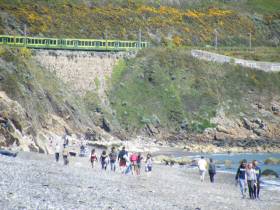Displaying items by tag: Beaches & Marinas
#CoastalNotes - Blue flags have reached a record total in those awarded to Irish beaches and marinas for 2018 by An Taisce environmental group.
The 83 Irish beaches and seven marinas writes The Irish Times, that have achieved the accolade must adhere to specific criteria related to water quality, information provision, environmental education, safety and site management – and comply with bathing water regulations considerably above minimum EU standards.
The number of sites receiving the blue flag is up two on last year’s total.
Carne in Co Wexford has achieved Blue Flag Status for the first time ever this year, while Ardmore in Co Waterford has been awarded for the flag first time since 1997 following the completion of a new wastewater treatment plant in the area during 2016.
All beaches and marinas awarded in 2017 retained blue flag status for 2018. Killiney and Donabate beaches in Co Dublin lost their blue flags in 2017 and did not regain them in 2018 due to their current bathing water classification by the EPA. See related story, on Dublin and Galway beaches that failed to meet EU minimum standards.
For a map giving location and a list of awarded Blue Flag status beaches click here in addition for more on the story.






























































